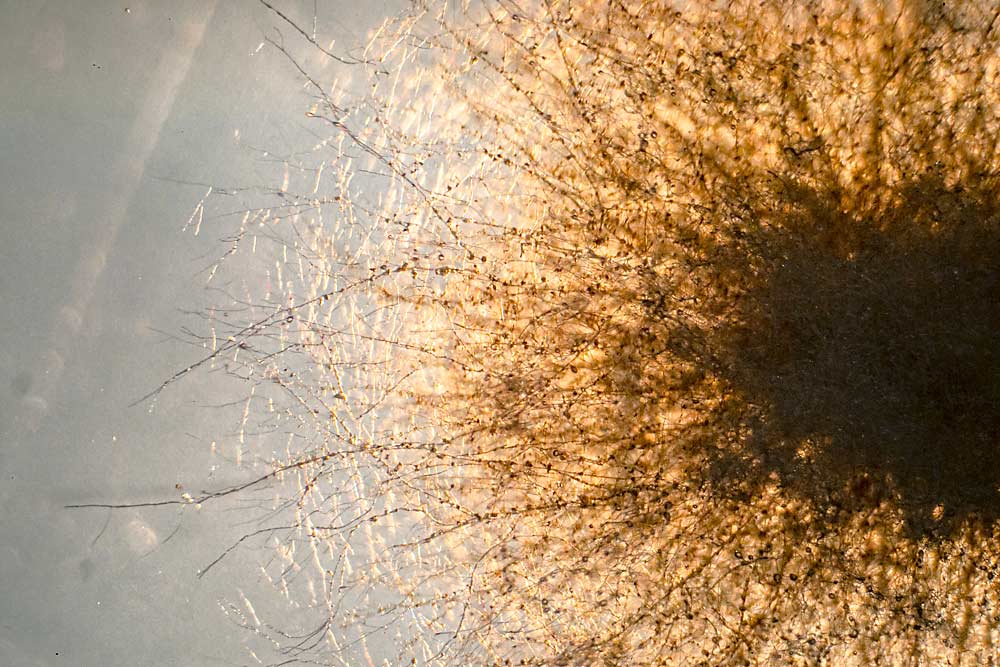
There’s apple scab everywhere in his orchard, and that’s just how Awais Khan likes it. The 180 or so cultivars and crab apples in his unsprayed block — replicates from a carefully managed germplasm repository — have a chance to show their natural talent for either resisting or succumbing in dramatic fashion to the apple scab pathogen, Venturia inaequalis.
“This orchard, it’s a pathologist’s dream,” said the Cornell University pathologist, who studies the genetic variation in plant disease resistance. When Good Fruit Grower visited his New York lab and orchard block in the summer of 2019, he pointed out resistant selections, such as the Russian apple Antonovka, which produce clean fruit in the midst of intense disease pressure. By cross-breeding with them, he can map out some of the genes that impact resistance.
There’s nothing new about that; breeders have been selecting for scab resistance for centuries, which is why old cultivars, such as Antonovka, stand out compared to susceptible neighbors in his orchard.
But pathogens constantly evolve, trying to overcome their target’s resistance. That’s why Khan and his collaborators want to use modern genetic tools to identify as many resistance factors as possible, so breeders can stack them and improve the odds of tree genetics outlasting pathogen evolution.
Key to outwitting the enemy in this evolutionary arms race: understanding the genetic diversity of the pathogens. Khan’s lab identifies different strains of fire blight and scab to determine the most prevalent and most virulent among them. That insight into the enemy’s arsenal will someday help breeders select for new cultivars with the most durable disease resistance.
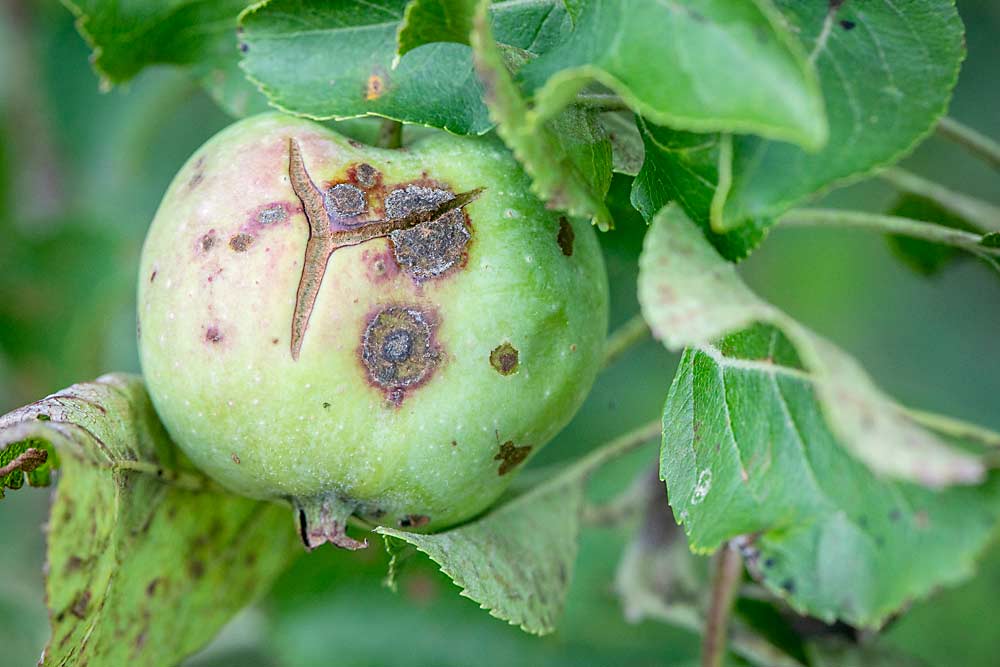
Fire blight diversity
Khan started his pathogen strain research with fire blight, because he inherited a collection of fire blight bacteria samples collected over a span of 40 years by a now-retired Cornell researcher. Running genetic sequencing on dozens of them — plus new collections from New York, Washington and elsewhere — revealed far more diversity than previously understood, he said.
There appear to be different groups of fire blight, genetically speaking, and different levels of virulence and aggression, which he continues to evaluate. And, when he chose three strains to expose to three cultivars, he found different patterns of response, which shows that disease susceptibility and resistance have multiple mechanisms.
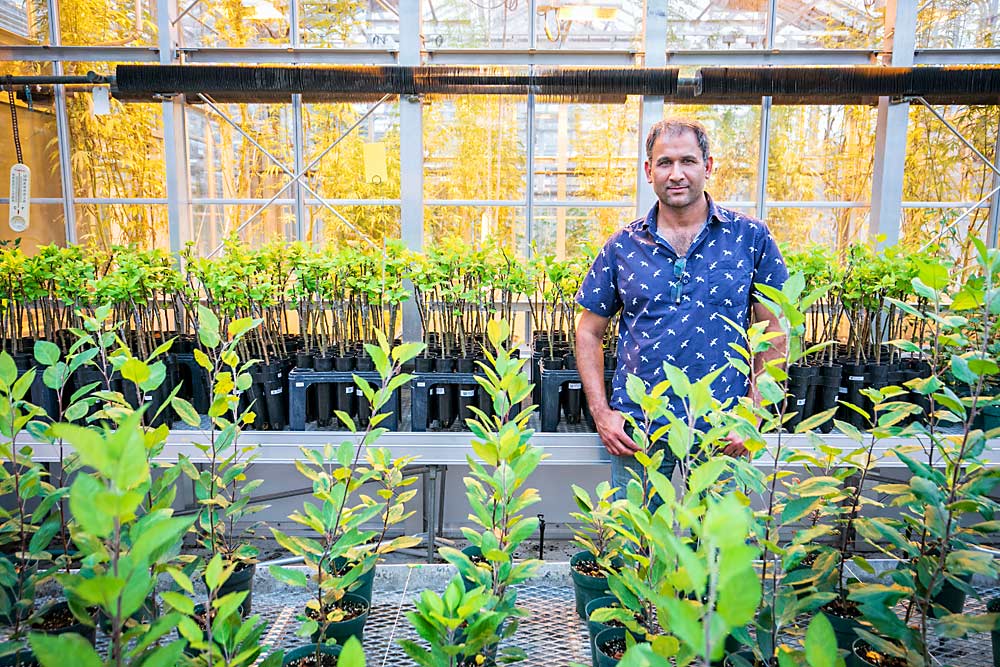
“That initiated my thinking that it is actually very important to make a good choice of which strain of bacteria we use to find resistance,” Khan said. “If we use a strain that doesn’t exist in Washington or that existed 50 years ago, if we use that for breeding, that doesn’t make any sense.”
Fire blight resistance represents what scientists call a quantitative trait, meaning there is a gradient from most to least resistant, said Sarah Kostick, a graduate student at Washington State University who has evaluated apple cultivars to understand the gradient of susceptibility to fire blight. A gradient means lots of genes play a role, each contributing a little bit here and there.
Her research focuses on detecting the genetic regions that contribute, so that DNA markers can be developed to target those traits in WSU’s apple breeding program, helmed by her adviser, Kate Evans.
Kostick used only one strain of fire blight to develop her gradient — a common Pacific Northwest strain isolated by Oregon State University pathologist Ken Johnson. The study otherwise would have been too complex to be statistically powerful, she said, but understanding the role that strain diversity plays will be important in the future.
Breeders want to work with more complex, multigene resistance factors to combat pathogen diversity and evolution.
“The incremental, qualitative response is what we want, because if a pathogen develops resistance to one, the others are there,” Khan said.
Scab evolving
Think about a typical spray program. Growers rotate products to prevent pests from developing resistance to the same pesticide mode of action. Planting an apple tree with a single gene for disease resistance is like using only one fungicide, all season long, for decades. All that repeat exposure means the pathogens face a lot of pressure — and opportunity — to adapt.
In Khan’s scab block, he has 10 cultivars and crab apples with known resistance. “We try to monitor which known genes are still working and which have broken down, which means new (scab) isolates,” he said.
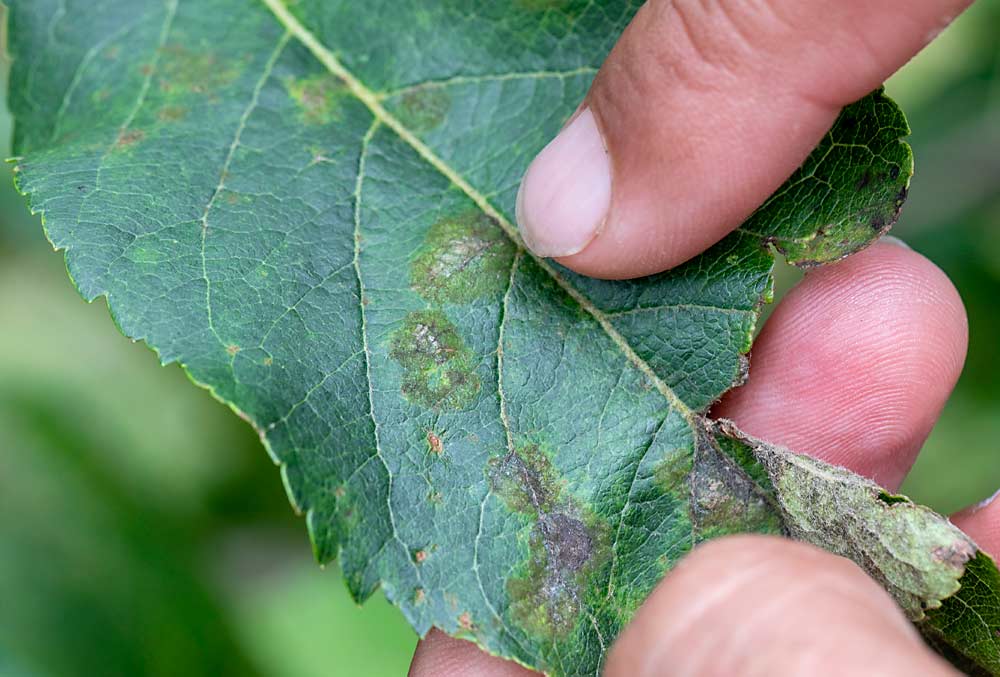
In 2019, under very high scab pressure in the region, he noticed that Malus floribunda, a crab apple that’s been used as a scab-resistant breeding parent for a century, was devastated by scab for the first time. That’s a big deal, because many commercial cultivars inherited their resistance from it.
So, he collected scab samples and took them to the lab for genetic screening and propagation. There, he tested those same isolates against commercial cultivars descendent from M. floribunda, including GoldRush and Florina, and was surprised to discover that the cultivars remained resistant. That’s good news, but also suggests that resistance is more complicated than previously understood, with more genetic factors at play.
“If we know why it’s not infecting the descendants, we can use markers to better select for the breeding program,” Khan said.
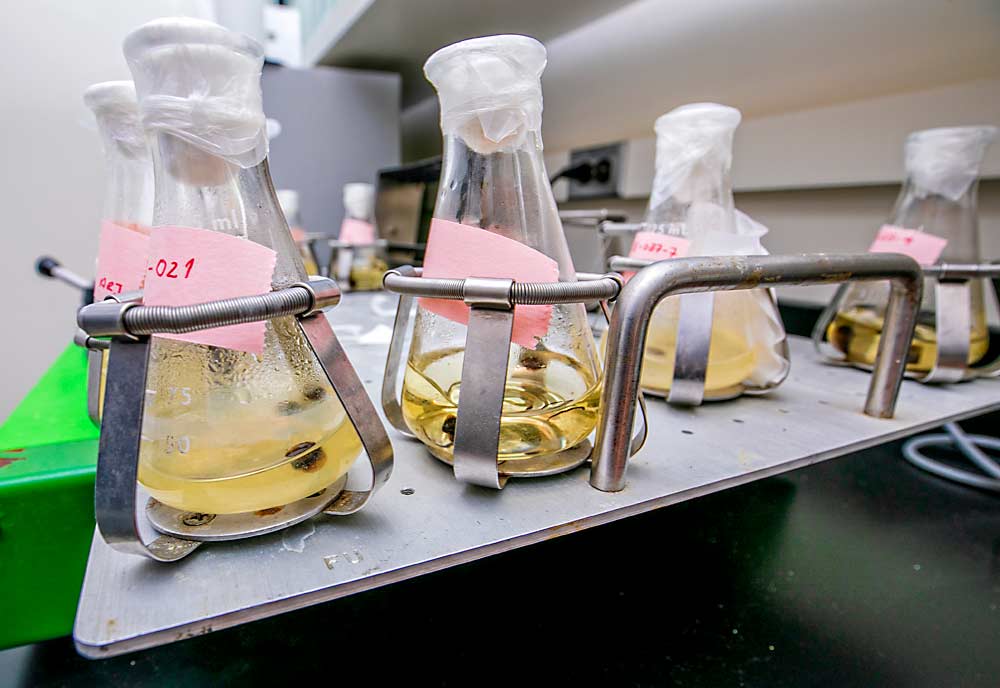
Durable resistance
University of Minnesota apple breeder Jim Luby is very interested in Khan’s work on scab genetics. Honeycrisp also exhibits some scab resistance, though it’s not complete immunity. That suggests that some variation in the scab population allows certain strains to sneak past Honeycrisp’s defenses, he said.
“We’ve kind of been breeding blind so far,” he said, when it comes to the different strains of scab and their prevalence and virulence. “We try to stack those resistance genes, but we don’t know if we are duplicating resistance to the same subset of Venturia races or to different races, which would be even more powerful for resistance.”
Honeycrisp inherited its scab resistance from Duchess of Oldenberg, a Russian cultivar descendent from Malus sieversii — a wild apple ancestor from the Caucasus region, Luby said. So, he’s focused on trying to breed new selections that carry resistance to scab from Honeycrisp and M. floribunda, which would be much more durable than from one source alone. A new apple nearing release by the program has both.
Unfortunately, both sources of resistance lie on the same chromosome, so offspring still tend to inherit one or the other. That is, unless and until he finds a lucky new selection that had some chromosomal crossing in just the right spot, allowing for a combination of both traits on the same chromosome, he said. Then, it’ll be easier to combine the stacked resistance genes with other desirable traits.
Luby sent samples from the family of crosses to Khan, who’s incorporating them into his scab resistance mapping and marker development.
“We do not have a pathologist devoted to fruit crops here at UMN,” Luby said, “so I’m looking forward to working with Awais, who is steeped in apple pathology.” •
—by Kate Prengaman






Leave A Comment